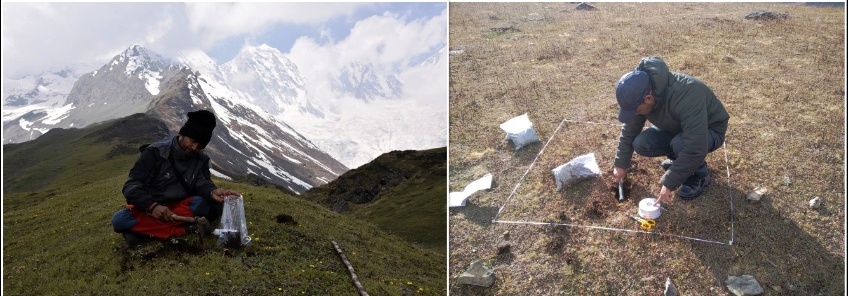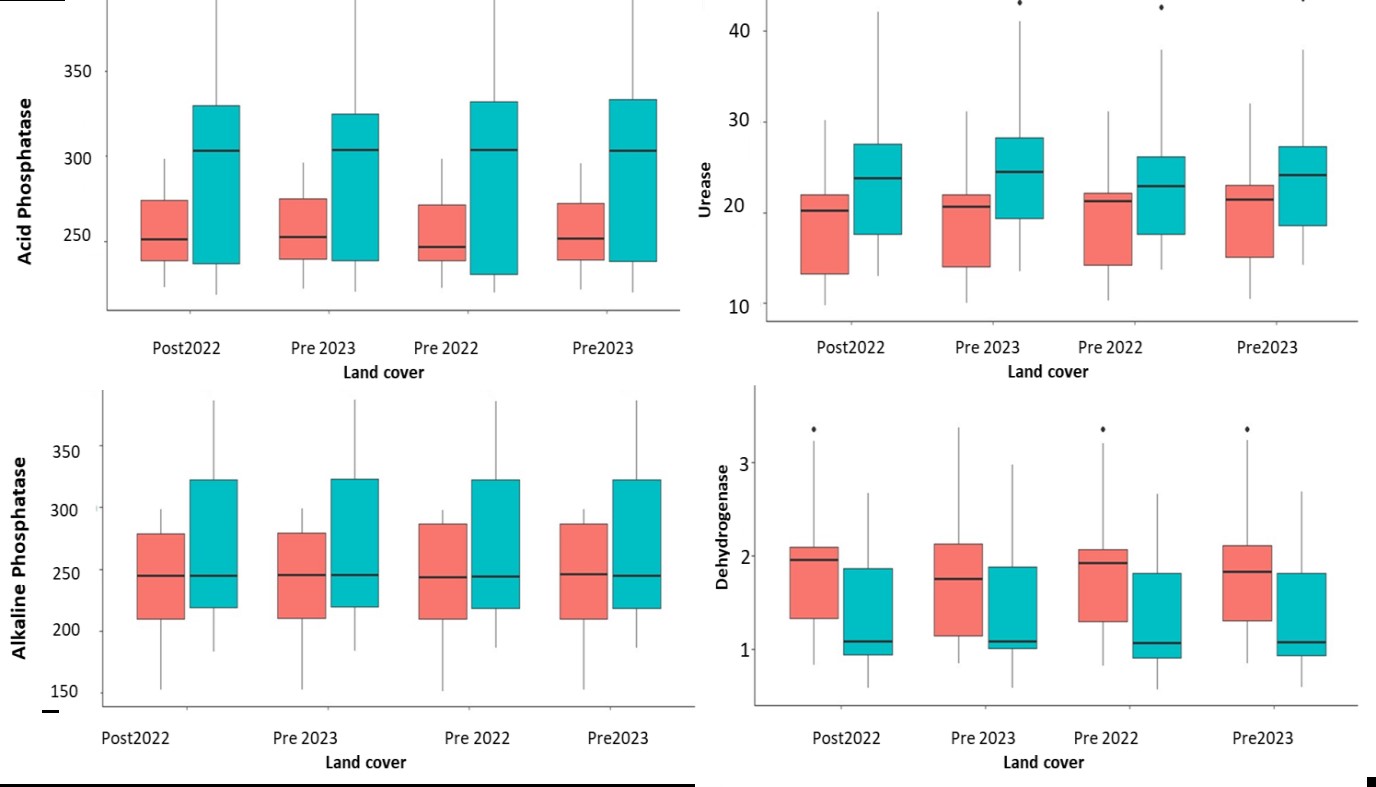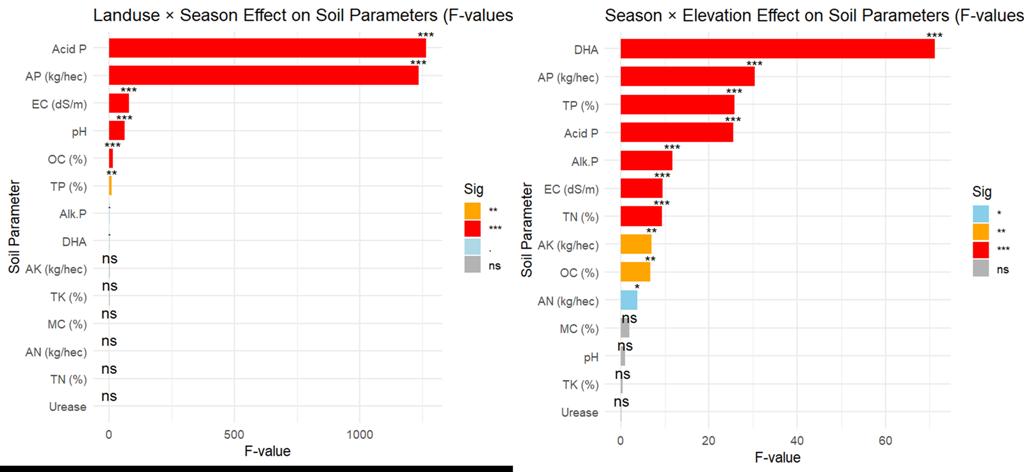Geo-spatial variability of Soil Microbial Indices of Climate Sensitive Alpine Treeline Ecotone of Indian Western Himalaya and its linkages to Soil Organic Carbon Fractions
Soil microbial communities are responsible for the cycling of carbon (C) and nutrients in any ecosystems and their activities are regulated by biotic and abiotic factors such as the quantity and quality of litter inputs, temperature, and moisture (Puissant et al. 2018). Atmospheric and climatic changes will impact both abiotic and biotic drivers in ecosystems and the response of ecosystems to these changes. Feedbacks from ecosystem to the atmosphere may also be regulated by soil microbial communities (Puissant et al. 2015). Although microbial communities regulate important ecosystem processes, it is often unclear how the abundance and composition of microbial communities correlate with climatic perturbations and interact to effect ecosystem processes (Castro et al. 2010). As such, much of the ecosystem climate change research conducted to date has focused on macroscale responses to climatic change such as changes in plant growth, plant community composition, and coarse scale soil processes, many of which may also indirectly interact to effect microbial processes. Global warming and associated environmental changes are predicted to have strong impacts on high-altitude ecosystems (IPCC, 2013) which threatening the sustenance of the mountain ecosystem like the Himalayan region.
Alpine & sub-alpine ecosystems are critically vulnerable and sensitive on the face of climate change and their carbon cycle may influence pattern of vegetation in the high-altitude environment of Himalaya. Beyond a certain elevation in high mountains, trees fail to grow largely because of heat deficiency, resulting in a “physiognomic discontinuum”, characterized by the separation of forests from treeless alpine meadows termed as Alpine treeline (Singh 2018) this conspicuous margin between tree-covered and tree-less areas represents an ecotone of vast bio-geographic importance with a wide ecological, climatic and socio-economic relevance (Collaghan et al. 2002). However, understanding the responses of microbial communities to climate change is complicated by the vast and largely unexplored diversity of microbiota found in the alpine environment. Also, different high altitude ecosystems comprise different microbial communities, and this is further compounded by effects of land use, other disturbances (such as management practices) and different biogeographical patterns viz. distribution of microbial communities over space and time (Rui et al. 2015).
A joint report of ICIMOD and MacArthur foundation (Sharma et al. 2009) states that the rising temperatures will alter the ice-free period, make the growing season longer, bring about changes in the patterns of food web interactions, community structures and nutrient dynamics. However, little is known about the responses of soil microbial communities to climate changes in the alpine & sub-alpine forest ecosystem of central Himalayan region, although they are integral in driving biogeochemical processes such as carbon and nitrogen cycling, greenhouse gas mitigation, and ecosystem services. The project, therefore, attempts to fill these gaps and aims to address the influence of climate change (altitude as a proxy indicator of temperature) on microbial ecology and its role in soil carbon dynamics in major plant communities of alpine & sub-alpine ecosystem of the Indian Western Himalaya.
Objectives
The study targets to investigate the role of rhizospheric communities in soil carbon dynamics in climate sensitive alpine & sub-alpine plant communities (treeline ecotone) of Indian Western Himalaya with the following specific objectives:
1. To study the rhizosphere effect of treeline ecotone of the Indian Western Himalaya on soil enzyme, soil C & N, and other physicochemical properties of soil
2. To assess the rhizospheric community composition using high throughput sequencing along an altitudinal gradient (a proxy of temperature) of treeline ecotone of the Indian Western Himalaya
3. To study the Geospatial variability of the soil microbial indices of Alpine treeline ecotone in the Western Himalayan region using a geostatistical approach
Study Sites
1. Darma valley Pithoragarh Uttarakhand
2. Parvati valley Kullu Himachal Pradesh
Outcomes
In Darma Valley land use significantly influenced all key soil parameters, microbial biomass, and enzymatic activities consistently across 2022–2024. Season*Site interaction has significant positive impact on soil enzyme activity and microbial profile of the valley whereas Parvati Valley demonstrated that land use and elevation are dominant drivers of spatial variability in soil nutrient pools, microbial biomass, and enzyme activities. High F-values for OC, AK, SMBC, MBN, DHA, and Alk.P underscore the strong influence and significant positive correlation of vegetation type and land use on soil fertility and microbial functioning.

Fig 1. Soil sampling at Gabbe Bugyal, Darma Valley, Pithoragarh Uttarakhand and Parvati Valley Himachal Pradesh, ©Dr. Sumit Rai

Fig 2. Soil Enzyme activity in Darma valley during pre and post monsoon in Different landuse




